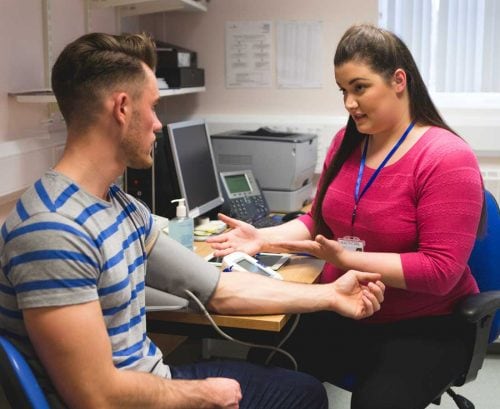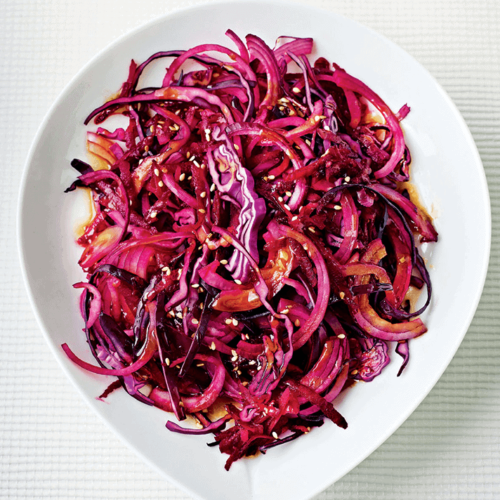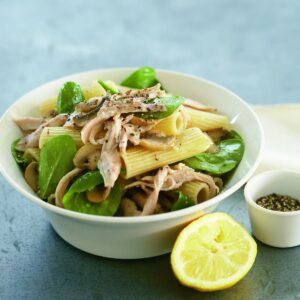
The DASH diet in a nutshell
If you have high blood pressure, reducing it even a little bit can improve your risk of developing conditions such as heart disease. That’s where the DASH diet can help.
DASH stands for Dietary Approaches to Stop Hypertension. It was developed in the US by the National Institute of Health to provide a life-long approach to heart-healthy eating. Clinical research proves that DASH is an effective nutritional approach to preventing and treating high blood pressure, which is a major risk factor for heart disease and stroke.
In those with type 2 diabetes, the diet has also been associated with reduced ‘cardio-metabolic’ risk measurements, including excess weight, a larger waist circumference and high cholesterol levels.
The ‘lower-sodium DASH diet’ reduces sodium to 1,500mg per day (just under 4g salt) and seems to be even more effective.
The DASH diet recommends daily or weekly numbers of servings across different food groups to achieve 2,000 calories per day, which can be adjusted to individual needs.
It also advises limiting saturates. Clear your cupboards, fridge and freezer of processed meats, coconut and palm oils that are high in saturated fat. Sugary foods and drinks need to be limited to keep calories down.
What can you eat on the DASH diet?
Foods naturally low in saturated fats, including vegetables, fruits, whole grains, low-fat dairy products, fish, poultry, beans, nuts and vegetable oils.
Flavour replacements for salt to help you keep to under 6g salt a day while still enjoying flavoursome meals. Try adding herbs and spices, reduced-salt stock cubes or the juice of citrus fruits, such as lemons, to your recipes.
What a typical day’s DASH diet menu plan could look like
Breakfast 2 slices wholegrain bread with 20g no added salt cashew or peanut butter and a 160g bowl of orange segments.
Snack 200g reduced-fat Greek yogurt with 30g dried apple pieces.
Lunch Salad made with 100g cooked lentils, 140g avocado, 80g cucumber and 80g tomato dressed with 1tsp olive oil and 1tbsp balsamic vinegar.
Snack 30g handful pistachio nuts and 80g fresh mango.
Dinner 130g grilled salmon with 125g quinoa and 80g ratatouille. Plus a fruit salad topped with low-fat fromage frais.
Total 1,953kcal, 17g saturated fat, 1.7g salt, plus 64 per cent of your daily potassium
Will the DASH diet suit you?
The DASH diet is regularly voted the best diet to follow for general good health. If you have any concerns that it might not suit you, talk things through with your GP before starting.
Case study
Nikki Chapman, 56, an IT consultant who lives with her husband and daughter, switched to a low salt and sugar diet after she was diagnosed with high blood pressure in 2013.
I’d woken up in the night a few times with palpitations and then one morning my husband noticed an abnormally large vein had appeared on my left temple. He was really worried about it, so I went to my GP, who took my blood pressure. It was 220/110 – which was dangerously high – and I was advised I should take medication to lower it.
Although I wasn’t keen on taking pills, I agreed. Over the next few weeks, I was prescribed three different types of pills, all of which I reacted to adversely. The side effects were horrendous – I suffered sickness, headaches, dizziness, felt faint and experienced nausea and blurred vision.
I decided not to take them and see if I could find a better way to lower my blood pressure.
The DASH diet instead of medication
I began to do some research online and discovered the DASH diet, which involves increasing your intake of fruits, vegetables and whole grains. You’re also advised to stick to low-fat dairy, eat less red meat, cut down on processed foods, reduce your salt and sugar intake, and take more exercise. I considered myself fairly healthy already, as
I wasn’t overweight, I practised yoga and drank herbal teas, but I was prepared to accept that my diet could be affecting my high blood pressure. I decided to see if adjusting what I ate would make a difference.
I made an effort to increase my fruit and vegetable content in every meal. I’m now vegetarian, and my plate is packed with vegetables such as spinach, broccoli, green beans, courgettes, aubergines, kale, sweet potato, parsnip, carrots, avocados, peas and edamame beans. They’ve become my staples and I like as much variety as possible.
I stopped eating potatoes and pasta and instead include more lentils. I pack my own lunchbox with healthy homemade salads and soups, or hummus, vegetables, homemade seeded crackers and falafels. I avoid all shop-bought, pre-packaged foods and you’ll never find me in the biscuit or crisp aisle in a supermarket. I no longer eat flavoured yogurts but have natural greek yogurt instead.
Fine-tuning the DASH diet
Something else I discovered was that the ‘healthy’ mint and liquorice tea I’d been drinking could also raise blood pressure considerably if drunk to excess – I’d had no idea. I replaced it with fruit tea, and I drink lots of water throughout the day.
I check that canned vegetables, such as chickpeas, aren’t preserved in saltwater and I avoid vegetable protein foods, as they are often highly processed and can be very salty.
I eat a banana a day, as they contain potassium to help lower blood pressure, and a bowl of porridge with either blueberries, stewed apples or blackberries. I snack on nuts – particularly walnuts and almonds, as they can also help with blood pressure if eaten as part of a low saturated fats diet.
I haven’t just made changes to my diet, though – I also take more exercise. I continue to do lots of yoga (although, initially, I had to stop doing inversions, such as headstands, which can raise blood pressure). I also take a long walk with my dogs every day and make sure I get a solid seven to eight hours of sleep a night.
My GP practice initially felt I should go back on blood pressure medication as a precaution. But having purchased a blood pressure monitor I was able to take regular readings and knew my blood pressure had dramatically reduced. It’s now a very healthy 113/74 and the practice has agreed I don’t need pills anymore.
“The DASH diet has helped bring my blood pressure right down”
Article sources and references
- Steinberg, D., Bennett, G. G., & Svetkey, L (2017) The DASH Diet, 20 Years Later. JAMA, 317(15), 1529–1530. doi:10.1001/jama.2017.1628https://www.ncbi.nlm.nih.gov/pubmed/28278326
- Chiavaroli L et al (2018) Portfolio Dietary Pattern and Cardiovascular Disease: A systematic review and meta-analysis of controlled trials. Progress in Cardiovascular Diseases 61 (1): 43-53. DOI: 10.1016/j.pcad.2018.05.004https://www.ncbi.nlm.nih.gov/pubmed/29807048
www.healthyfood.com










